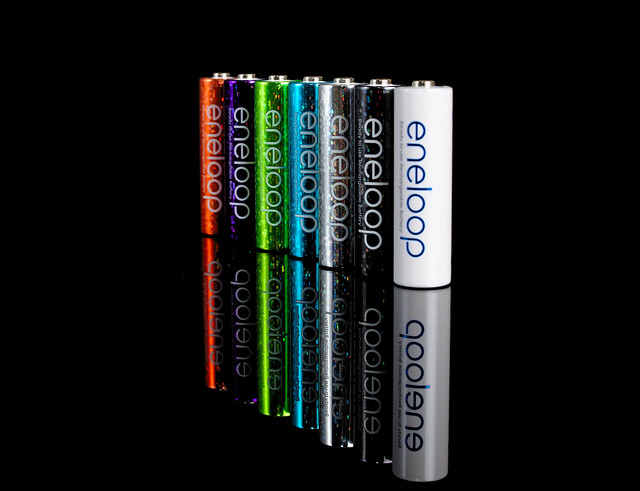Smart Battery-Introduction, Working, and Charger
Jun 23, 2020 Pageview:1372
Would you like to learn about a smart battery? How does it work? If so, then you have landed to the right place. Continue reading to learn all you need to know about smart battery.
What is a smart battery?
Also known as a smart battery pack, a smart battery is a rechargeable battery pack that comes with its own battery management system or BMS. Often, it is utilized in smart devices or portable devices which include mobile devices and laptops. In addition to the standard negative and positive terminals, a smart battery comes with two or more terminals for connecting to the battery management system - typically the negative terminal is even utilized as BMS “ground”. The examples of BMS interfaces are EIA-232, EIA-485, SMBus, PMBus, and Local Interconnect Network.
Internally, a smart battery comes with an internal electronic circuit as well as sensors that can determine current and voltage and deduce charge level as well as SoH or State of Health parameters, which indicate the state of the cells.
And externally, it can interact with a smart battery charger and a smart energy user through the bus interface. It can demand that the charging stop, request charging, or require that the smart energy user stop utilizing power from this battery.
How does a smart battery work?
As of now, you know what does smart battery means. So, how does it work? Let’s get into more detail and understand the inner workings of a smart battery.
Size, weight, and color don’t reveal its SoC (state-of-charge) and SoH (state-of-health). Users are at the mercy of the battery and just charging a battery doesn’t ensure the expected runtime. Most batteries for today’s laptops and alike devices are smart, which means that some interaction occurs between the battery, the user, and the equipment. The definition of smart does differ among manufacturers as well as regulatory authorities.
Some call their batteries smart by just adding a chip, which sets the charger to the right charge algorithm. The SBS (smart battery system) forum indicates that a smart battery needs to offer state-of-charge indications.
An increasing count of rechargeable batteries is designed smart. And smart means the battery pack entails some level of intelligence. Come with a microchip, these communicate to the charger and tell the user of its status like indicating state-of-charge.
Most smart batteries out there work on the principle of coulomb counting, which is a theory that goes back 250 years when Charles-Augustin de Coulomb first developed the “Coulomb Rule”.
There are numerous kinds of smart batteries and each delivering different complexities as well as cost variants. The most basic ones may entail nothing more than just a chip setting the charger to the right charge algorithm.
Currently, many manufacturers provide an integrated circuit ((IC) chips in a single wire and two-wire systems, also called System Management Bus (SMBus).
The single wire bus offers interactions via one wire. A close look unearths, however, that the battery yet utilizes three wires. They contain the data line that even offers the clock information and the negative and positive battery terminals. The single-wire systems store the battery code and monitor battery data that includes current, voltage, temperature as well as state-of-charge information. Most single-wire systems come with their own protocol and utilize a customized charger.
SMBus corresponds to a concerted effort for agreeing on one communications protocol and one set of data. The Intel/ Duracell smart battery system in employ currently was standardized in year 1993 and compromises of two separate lines for clock and data.
The SMBus battery includes permanent and temporary data. And the manufacturer programs the permanent data into the battery including the battery ID, manufacturer’s name, battery type, date of manufacture, and serial number. The temporary data is being introduced during the use and compromise of cycle count, maintenance requirements, and usage patterns. The SMBus is categorized into Level 1, Level 2, and Level 3. Level 1 has been discontinued as it doesn’t offer chemistry-independent charging. It supported one chemistry only.
Level 2 charger is totally managed by the smart battery and serves as an SMBus slave, responding to the current and voltage commands from the smart battery. Also, Level 2 acts as in-circuit charging, which is a practice common in laptops. Another utilization is a battery with an in-built charging circuit. Circuit and battery are married to each other in Level 2.
A level 3 charger is able to interpret commands from a smart battery, as is with Level 2 and even serve as master. In simple words, the Level 3 charger can demand charging info from the smart battery but it can even impose its own charging algorithm by just responding to the “chemical battery”. And most industrial smart chargers are on the basis of the hybrid type Level 3.
This is a basic internal working of a smart battery you should know.
Do you need a smart battery charger?
Smart battery chargers are much more sophisticated as along with providing different switchable charging modes, they are even programmed to offer a planned and varied output for charging and maintaining your battery in the best condition.
Most smart chargers have several charging modes, and each one customized to different battery types and charging needs. Moreover, smart battery chargers are programmed with many automated steps and variations to offer the best environment for the battery to accept a full charge.
A typical smart battery charger can have up to eight to nine distinct steps to achieve the best performance from a battery. A smart battery charger enables you to revive your dead battery and save money and time. Considering the advantages of using a smart battery charger for your application, you definitely get the one.
That’s everything you should know about smart battery, its working, and charger!
Leave Message
Hottest Categories
-
Hottest Industry News
-
Latest Industry News











